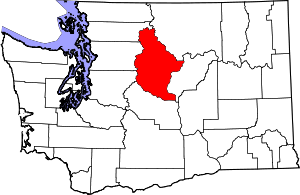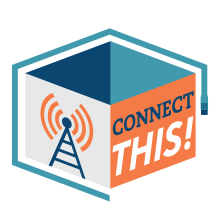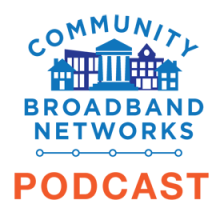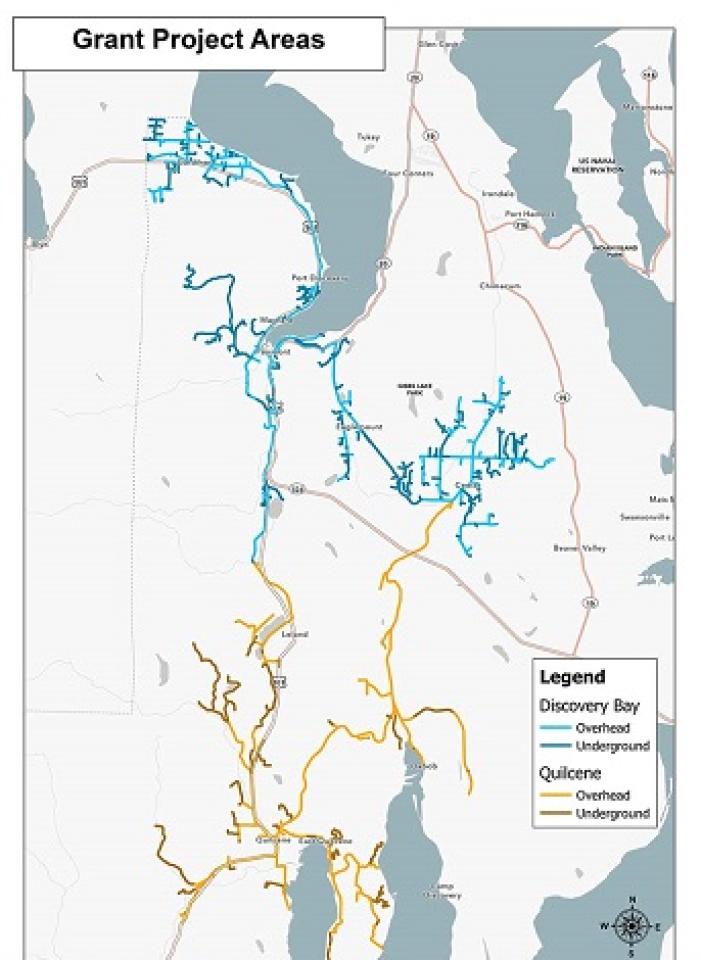
Fast, affordable Internet access for all.

Officials in Chelan County, Washington say they are making meaningful progress on its decades-old plan to deliver affordable broadband to all 79,000 county residents. After securing financing for its latest planned fiber expansion, the Chelan County Public Utility District (PUD) says it’s exploring options to help finish the job of equitable, affordable, full-county deployment.
Chelan County PUD was formed in 1936 by local voters frustrated by costly, spotty access to electricity. Like so many utilities, cooperatives, and communities, those rural electrification efforts have helped inform the quest for ubiquitous, affordable broadband access almost a century later.
In 2001, the Chelan PUD began building a county-wide wholesale fiber network at a time when PUDs in the state were restricted from offering retail telecommunications services. (Those state statutes were rolled back by state lawmakers in May 2021). The network currently covers roughly 81% of the county, reaching about 39,000 subscribers; 21,000 of which get broadband service through one of the county’s five local ISP partners.

An ongoing network expansion plan aims to extend the reach of the county’s fiber network to roughly 42,000 homes and businesses. Those efforts are currently being funded by some of the $14.9 million in American Rescue Plan Act (ARPA) funds received by the county, as well as the Chelan PUD's Public Power Benefit Program, financed by surplus wholesale power sales.

This week on the podcast, Christopher is joined by Will O'Donnell, Broadband and Communications Director at Jefferson County Public Utility District in Washington State, to talk about the Herculean task facing the PUD: how to deploy an open access fiber network to the utility's 21,000 meters in some of the least-dense parts of the state.
It's a project that will likely cost more than $200 million, but Jefferson County PUD is getting started now. It's using $50 million to reach the first 4,000 households over the next few years, covering miles of coastline and forest from the Hood Canal and Dabob Bay across the peninsula to the Pacific Ocean. Will shares how the combination of federal and state funding, as well as recent legislative changes freeing the PUDs up to offer retail broadband service, turned around local leadership since a 2019 study that showed intractable barriers to success. Now, Jefferson County is moving full-steam ahead. Construction begins later this year, and the PUD plans to operate as an Internet Service Provider (ISP) on the network alongside others. The secret sauce to keeping costs down and being successful? Using tried-and-true, conservative deployment models (at least at first), and a retail plan with managed Wi-Fi at its core to keep costs low and truck rolls to a minimum.
Residents are already clamoring for the service.
This show is 25 minutes long and can be played on this page or via Apple Podcasts or the tool of your choice using this feed.
Transcript below.
We want your feedback and suggestions for the show-please e-mail us or leave a comment below.
Listen to other episodes here or view all episodes in our index. See other podcasts from the Institute for Local Self-Reliance here.
Thanks to Arne Huseby for the music. The song is Warm Duck Shuffle and is licensed under a Creative Commons Attribution (3.0) license.

Join us Thursday, June 22nd at 2pm ET for the latest episode of the Connect This! Show. Co-hosts Christopher Mitchell (ILSR) and regular guest Doug Dawson (CCG Consulting) will be joined by Drew Clark (Broadband Breakfast) and Angela Bennink (Kitsap PUD) to talk about all the recent broadband news that's fit to print. Stay tuned for more!
Email us at broadband@communitynets.org with feedback and ideas for the show.
Subscribe to the show using this feed or find it on the Connect This! page, and watch on LinkedIn, on YouTube Live, on Facebook live, or below.
Ziply Fiber has been increasingly active across Washington State, helping municipalities expand access to affordable, open access fiber networks. Those efforts have received a significant boost with the news that Ziply has acquired iFiber Communications, a Washington state open access ISP that works closely with Washington’s growing public utility districts (PUDs).
According to the Ziply announcement, the acquisition was for an undisclosed sum, but should dramatically help the company’s focus on expanding affordable fiber broadband service to Pacific Northwest customers long unserved or underserved by regional broadband monopolies like Comcast and Frontier Communications.
Ziply Fiber has unveiled new fiber construction projects across more than 90 cities and towns across the Northwest since the company began its fiber expansion plans in the summer of 2020. The iFiber acquisition is the second this year, Ziply having acquired Oregon fiber and wireless ISP Eastern Oregon Net, Inc (EONI) last June.
They’ve been particularly active in Washington state, most recently partnering with the Snohomish county government to leverage a $16.7 million Broadband Infrastructure Acceleration grant to expand affordable fiber access across the county. Ziply’s also been in talks with Whidbey Island, Washington officials on a major fiber expansion push.

It's December, which means it's time to pull the staff together and get a handle on what happened in the broadband landscape in 2022. Joining Christopher is GIS and Data Visualization Specialist Christine Parker, Associate Researcher Emma Gautier, Outreach Team Lead DeAnne Cuellar, Senior Reporter and Communications Team Lead Sean Gonsalves, and Senior Researcher and Research Team Lead Ry Marcattilio.
Fitting all of those titles into one recording studio was a real project, but it led to a constructive conversation about preemption laws, the broadband nutrition label, BEAD funding and the new Broadband Data Collection (BDC) process, the supply chain, and more. There were a couple of surprises in 2022, and the staff reckons with how their predictions from last year held up in the face of things.
This show is 53 minutes long and can be played on this page or via Apple Podcasts or the tool of your choice using this feed.
Transcript below.
We want your feedback and suggestions for the show-please e-mail us or leave a comment below.
Listen to other episodes here or view all episodes in our index. See other podcasts from the Institute for Local Self-Reliance here.
Thanks to Arne Huseby for the music. The song is Warm Duck Shuffle and is licensed under a Creative Commons Attribution (3.0) license.
Jefferson County, Washington’s Public Utility District (PUD) is just the latest to take advantage of a flood of new grants — and recently-eliminated restrictions on community broadband — to expand access to affordable fiber across the state.
Over the last few months, the PUD - situated northwest of Seattle, just across the Puget Sound - has been awarded more than $11 million in grants, including $1 million from the Washington State Public Works board, and another $9.7 million in Broadband Infrastructure Acceleration grants doled out by the Washington State Department of Commerce. The funds will help the PUD connect 2,600 homes in Gardiner, Quilcene, Cape George, Discovery Bay, and Marrowstone Island over the next two years.
Locally Operated Infrastructure, Affordable Prices, Fast Speeds

Construction is expected to start later in 2022, with the first subscribers to come online sometime in the first half of 2023. A project breakdown says they hope to provide basic speeds of 100 Megabits per second (Mbps) for $65 a month, and speeds of 1 Gigabit per second (Gbps) for $90 a month. The network will be open access, which means that additional ISPs (including, presumably, those currently offering service on the existing network) will be able to continue into the expanded areas.The PUD plans to offer a low-income tier for $45/month ($15 after the Affordable Connectivity Program subsidy), which is welcome to see.
Buoyed by an explosion in new grants and the recent elimination of state restrictions on community broadband deployments, Washington State is awash in freshly-funded local broadband proposals that should go a long way toward shoring up affordable Internet access across the Pacific Northwest.
In addition to Covid relief and various state grants, thirteen Washington State counties, ports and Tribal associations recently received $145 million in Broadband Infrastructure Acceleration grants aimed at boosting Internet access and affordability statewide. It’s the first tranche of $260 million planned for new infrastructure, and particularly exciting because it looks like nearly all of the funds went to community-led endeavors, with many of the newly built networks operated by local governments. Some projects will result in partnerships with locally rooted providers.
“Infrastructure is the foundation for digital equity,” Washington Commerce Director Lisa Brown said of the funding. “Washington state’s goal is to ensure all of our residents have access to affordable high-speed internet, as well as the devices, skills and confidence needed to connect with critical resources.”
State leaders say they received more than $413 million-worth of requests for 36 different projects, and have shared both a list and a map of all approved grants online.
Essential Aid for Existing Projects
Following hundreds of requests from community members urging the local Public Utility District (PUD) to address the lack of Internet access in Lewis County, Washington, the Lewis County PUD is answering the call with a proposal to construct an open access countywide fiber-to-the-home network and a relentless pursuit of broadband construction grant opportunities on behalf of its 33,000 members.
The plan to construct the 110-mile-long fiber backbone – anticipated to cost between $110 and $130 million to build – is months in the making. Since the beginning of the Covid-19 pandemic, the PUD has applied for over $30 million of state and federal broadband grants.
In August of 2020, the PUD applied for a $5.5 million grant through the Washington State Public Works Board to provide fiber-to-the-home (FTTH) services to residents of four communities in the western region of the county – “from west Chehalis to Adna and Pe Ell along Highway 6, and down through the Boistfort Valley,” according to the PUD’s website.
When that grant application was not awarded, the PUD turned to the USDA’s Community Connect program to propose a smaller project that would serve three of the four aforementioned communities. The USDA is expected to announce those grant recipients soon.
Update: State Governor Jay Inslee signing two bills amending the same section of state law at the exact same time forced the Washington Secretary of State to seek judicial guidance on which bill will take precedence over the other in the face of legal challenge. It is still unclear if the two bills are compatible; however, in these instances the bills should be filed in the order in which they passed the State Legislature, with the bill filed last taking legal precedence. The Public Broadband Act passed the State Legislature one day after S.B. 5383; therefore, the Public Broadband Act should prevail over the Senate bill (S.B. 5383).
Yesterday, following weeks of anticipation, State Gov. Jay Islee signed the Public Broadband Act (H.B. 1336), removing all restrictions on public broadband in the state of Washington, according to the bill’s primary sponsor, State Rep. Drew Hansen, D-23. This critical leap forward in Washington drops the number of states with laws restricting community broadband to 17.
Rep. Hansen’s tweet announcing the passage of H.B. 1336:
BREAKING: Governor Inslee just signed my Public Broadband Act so we have ENDED ALL RESTRICTIONS ON PUBLIC BROADBAND IN WASHINGTON STATE!!
Next step: contact your local gov’ts (utility districts, ports, counties, etc.) & tell them you want public broadband.
LET’S GO GET IT!!
Snapshot
Washington Governor pledges to sign Public Broadband Act
Maine hearing will reveal State Legislature’s willingness to introduce competition to incumbent ISPs
California bill amended to remove bond initiative backing public infrastructure projects of local communities
The State Scene
Washington
Two pieces of legislation aimed at expanding public broadband authority, H.B. 1336 and S.B. 5383, have been delivered to Washington Gov. Jay Islee to consider signing into law. Rep. Drew Hansen, the primary sponsor of H.B. 1336 recently told GeekWire that he “expects the governor to sign both.”
H.B. 1336 would give Washington’s cities, towns, counties, district ports and Public Utility Districts (PUDs) unrestricted authority to provide Internet services directly to end-users, while S.B. 5383, as a result of a series of amendments, deals largely with what information PUDs and ports have to provide to the state broadband office before offering service in unserved regions.
There will be a meeting between the governor and the sponsors of the two bills on Thursday, which will likely determine their fate. Although arguments about how the two bills will interplay are continuing throughout the halls of the State Legislature in Olympia, the prevailing legal interpretation is that the finalized versions of the bills do not conflict. If both bills are signed, and discrepancies are later discovered to be an issue, it will prompt the State Legislature to convene in the future to standardize differences between the legislation.